Coral Bells (Heuchera) thrive in partial shade but can tolerate more sun in cooler climates. They prefer well-drained, moist, rich soil with a neutral to slightly acidic pH (6.0 to 7.0). Some varieties, like H. sanguinea, do poorly in clayey or highly acidic soils.
This guide’ll cover the best growing practices for Coral Bells in part shade, including soil, watering, care, and suitable varieties for shaded areas.
What is Part Shade?
Part shade refers to a space that receives between 3 to 6 hours of direct sunlight per day, with the rest of the day spent in partial or complete shade.
Coral bells grow best in part shade, receiving dappled light or light morning sun. Growing them in full sun can cause their leaves to scorch, while too much shade can prevent them from flowering.
Choosing the Right Coral Bells for Part Shade
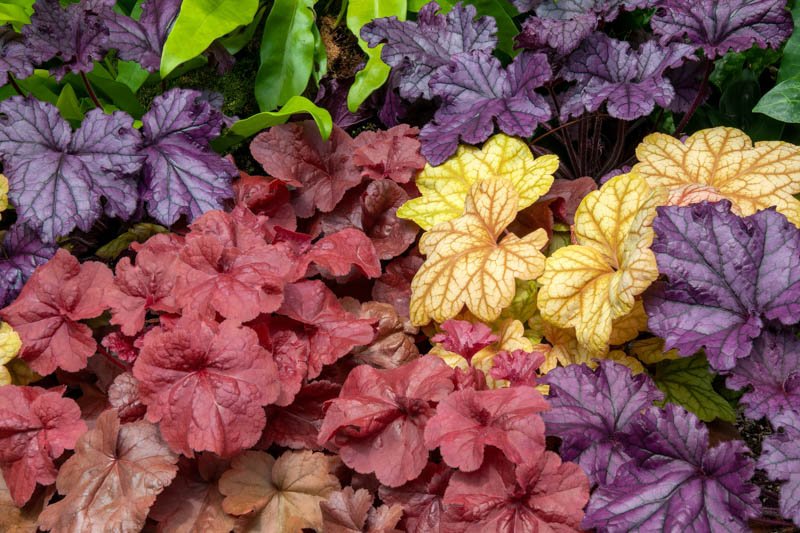
Coral Bells come in various varieties, each offering different colors, textures, and growth habits. Selecting varieties that thrive in low-light conditions is crucial when growing Coral Bells in part shade. Some of the best Coral Bells for part shade include:
- Purple Coral Bells: Known for its stunning purple foliage, this variety thrives in partial shade and adds vibrant color to any garden.
- Green Spice Coral Bells: With silver-green leaves and a subtle reddish tint, Green Spice is perfect for a shaded garden.
- Plum Pudding Coral Bells: This variety features deep plum-colored foliage that contrasts beautifully with green plants.
- White Coral Bells: For a lighter aesthetic, White Coral Bells’ pale foliage and delicate flowers add elegance to shaded gardens.
When selecting Coral Bells for shade, always ensure you choose varieties known for their shade tolerance. These plants generally prefer light, dappled shade but can tolerate some direct sun, particularly in cooler climates.
Soil and Planting Tips for Coral Bells in Part Shade
Coral Bells prefer well-draining, slightly acidic soil. The soil’s moisture level can remain high in part shade due to reduced sunlight, so proper drainage is essential. Here are some key tips for planting Coral Bells in part shade:
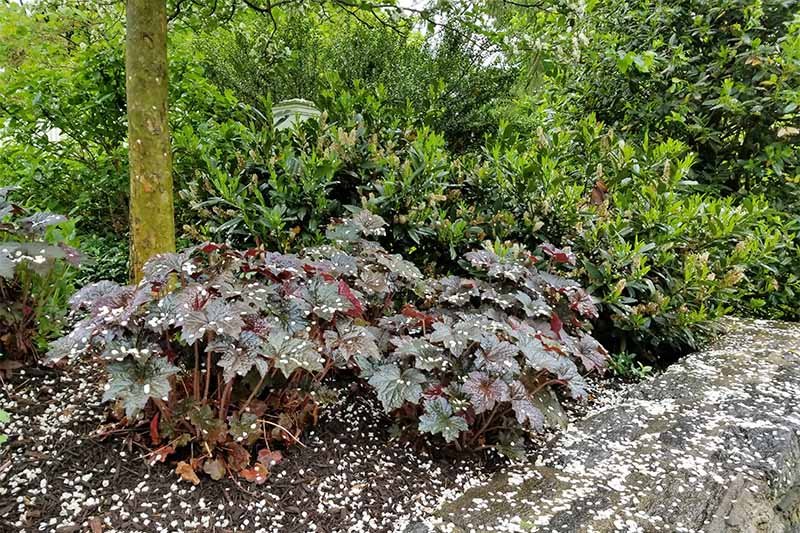
- Soil Preparation: Coral Bells thrive in soil rich in organic matter. To improve soil structure and provide nutrients, mix compost or well-rotted manure into the planting area.
- Drainage: While Coral Bells like moisture, they do not tolerate soggy soil. Ensure your garden soil drains well to prevent root rot.
- pH Level: Coral Bells prefer slightly acidic soil (6.0 to 6.5). If your soil is too alkaline, amend it with sulfur or organic materials like peat moss.
- Planting Depth: Ensure the root crown is level with the soil surface. Planting too deep can cause the crown to rot, while planting too shallow can expose the roots to drying out.
Watering and Care Tips for Coral Bells in Part Shade
Coral Bells need regular watering, mainly when grown in part shade. The dappled light in shaded areas means the soil retains moisture longer, but you must monitor their needs carefully.
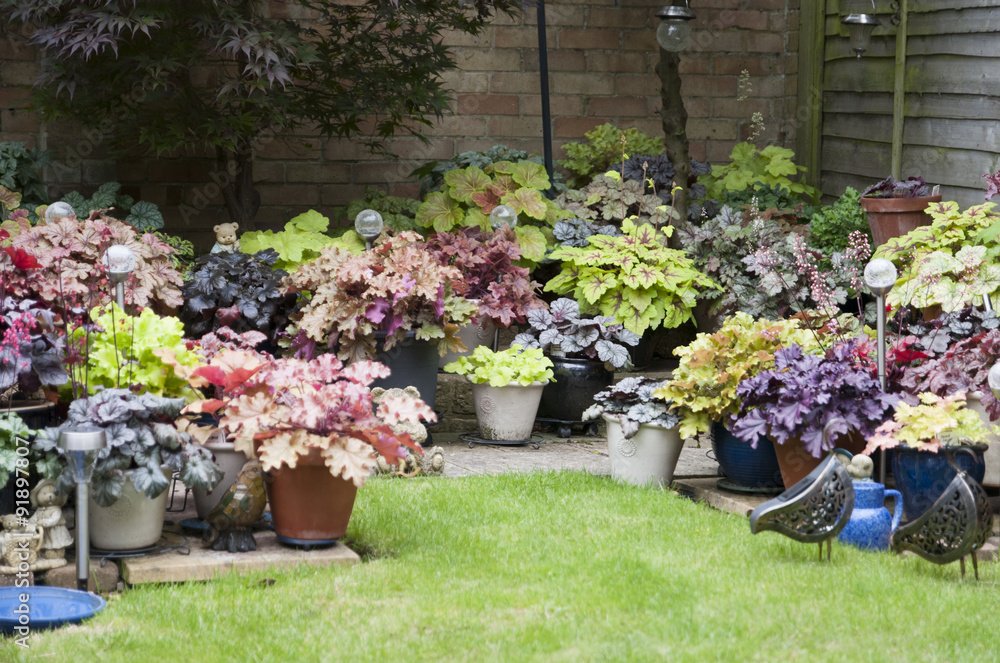
- Watering Frequency: Water Coral Bells regularly, especially in dry periods. However, always check the soil moisture before watering. The soil should be moist but not soggy. Water deeply to encourage deep root growth.
- Avoid Overwatering: Coral Bells are prone to root rot if the soil remains too wet. If you notice yellowing leaves, it could be a sign of overwatering. Ensure your garden has good drainage to prevent this issue.
- Mulching: Apply a thin layer of mulch around the base of the plants to retain moisture and suppress weeds. Be cautious not to pile mulch against the plant’s crown, as this can cause rot.
Common Problems When Growing Coral Bells in Part Shade
While Coral Bells are relatively easy to grow, gardeners may face a few challenges. Understanding these common issues can help you prevent or address them early.

1. Yellowing Leaves
Yellowing leaves can be a sign of overwatering or nutrient deficiencies. When Coral Bells’ roots sit in too much moisture, the plant can suffer from root rot, leading to yellow leaves. If the soil is too compact or not draining properly, the roots can’t get enough oxygen, and the plant struggles.
Solution: Ensure your garden has good drainage, and avoid overwatering. Regularly check the soil’s moisture level and allow it to dry out between waterings. Fertilize with a balanced fertilizer in early spring to ensure the plant gets the nutrients it needs.
2. Coral Bells Pests
While Coral Bells are relatively pest-resistant, they may attract aphids, snails, or slugs, particularly in moist, shaded conditions.
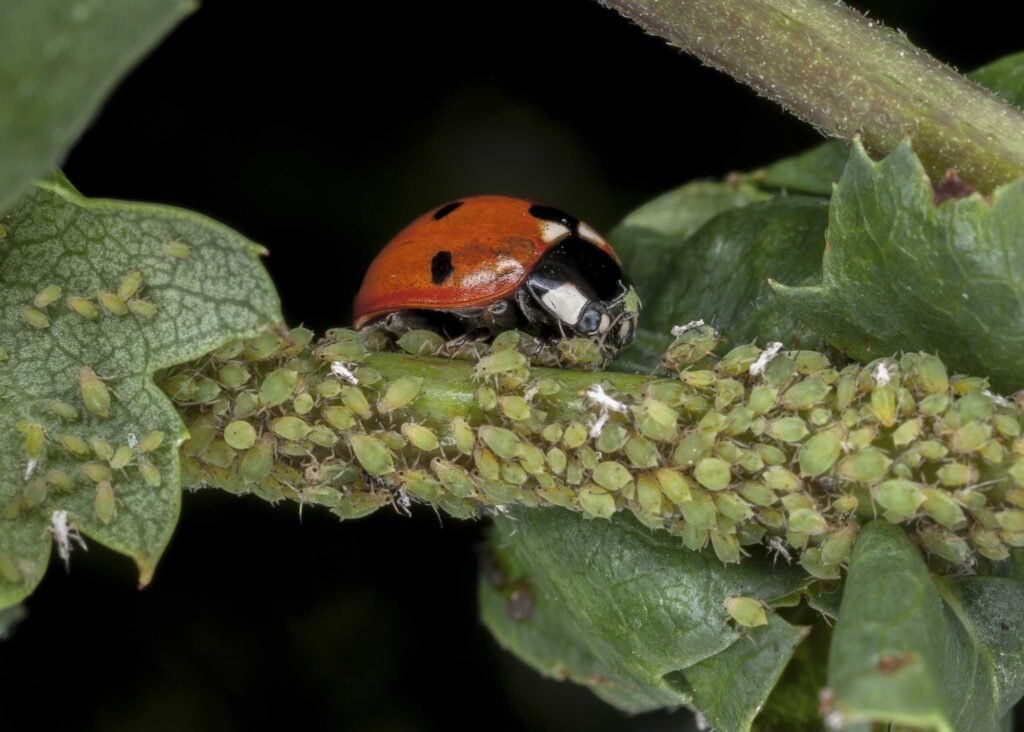
Solution: Remove pests by hand or use an insecticidal soap. For snails and slugs, use organic slug baits or create physical barriers around the plants, such as copper tape.
3. Powdery Mildew
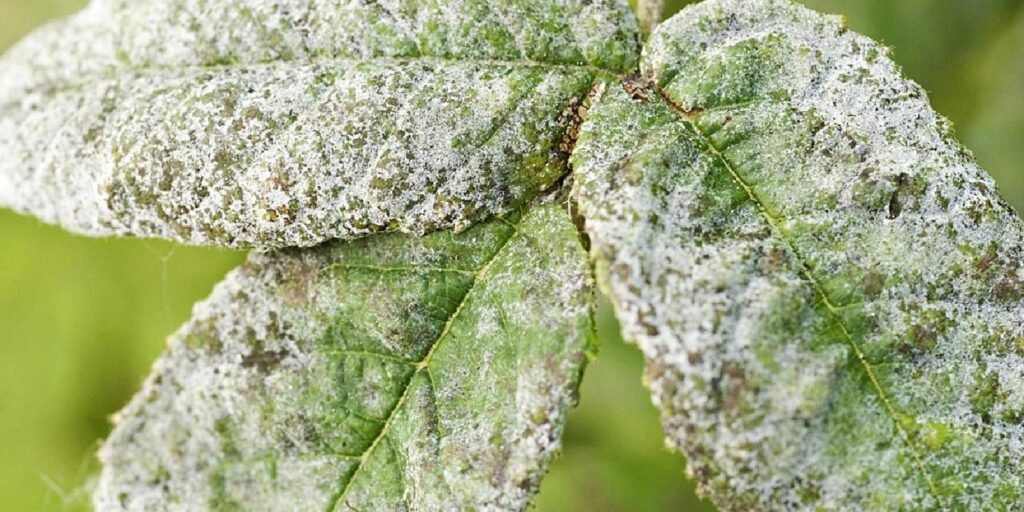
Powdery mildew can appear on Coral Bells’ leaves if the area is too humid and the airflow is restricted. It thrives in shady, damp environments.
Solution: Improve air circulation around the plant and avoid overcrowding. Remove affected leaves and consider using a fungicide if the problem persists.
Fertilizing Coral Bells in Part Shade
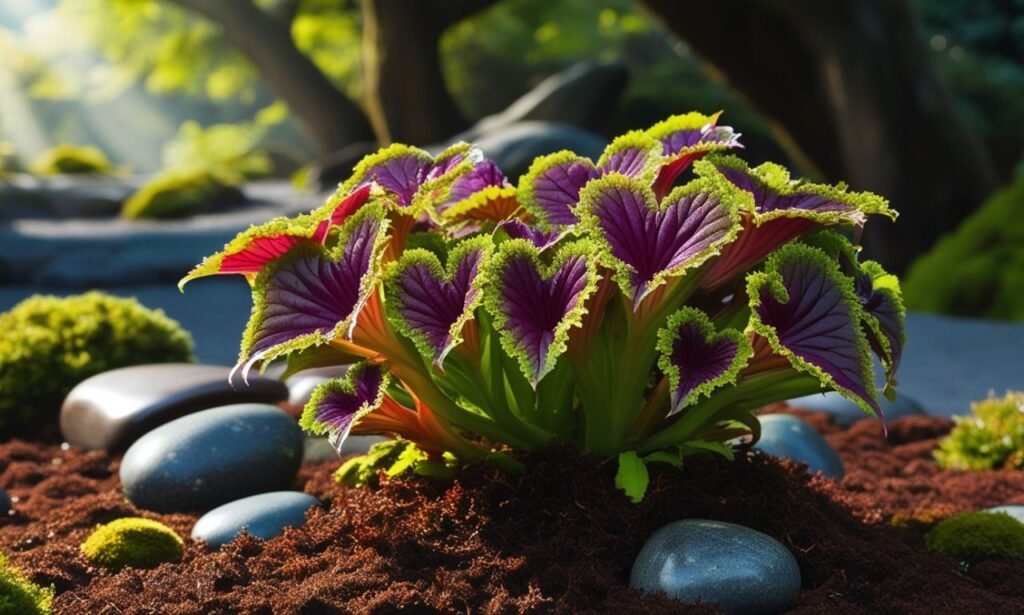
Coral Bells are light feeders but still benefit from occasional fertilization. Fertilizing helps promote healthy growth, vibrant foliage, and better blooms. Here’s how to fertilize your Coral Bells effectively:
- Best Fertilizer: Use a balanced, slow-release fertilizer (10-10-10) in early spring. This will support their growth throughout the season without overwhelming the plant.
- Organic Options: Organic compost or worm castings are excellent for Coral Bells. These improve soil fertility and add essential nutrients in a natural form.
- Frequency: Fertilize Coral Bells once in early spring and once in midsummer. Avoid fertilizing in late fall, as the plant prepares for dormancy and doesn’t need extra nutrients.
Companion Plants for Coral Bells in Part Shade
Coral Bells look stunning when planted with other shade-loving plants. Pairing Coral Bells with the proper companions can create a vibrant, lush garden that thrives in part shade. Some great companions for Coral Bells include:
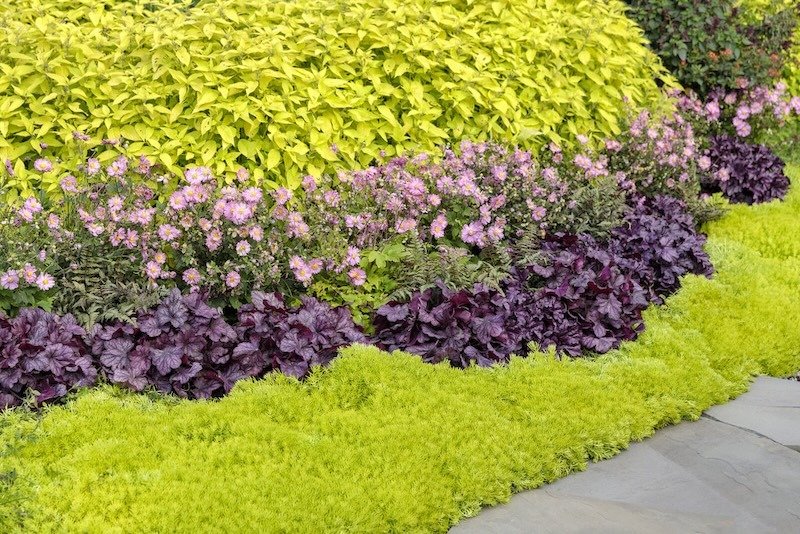
- Hostas: Hostas grow well in similar conditions and have large, bold foliage that complements the delicate nature of Coral Bells.
- Ferns: Ferns, like Japanese Painted Ferns, thrive in part shade and create a beautiful contrast with the colorful leaves of Coral Bells.
- Astilbe: Astilbe plants add texture and color to shady spots and pair beautifully with Coral Bells.
- Heuchera (other varieties): You can mix different Coral Bells (Heuchera) varieties for varied foliage colors and textures.
Coral Bells in Containers for Part Shade
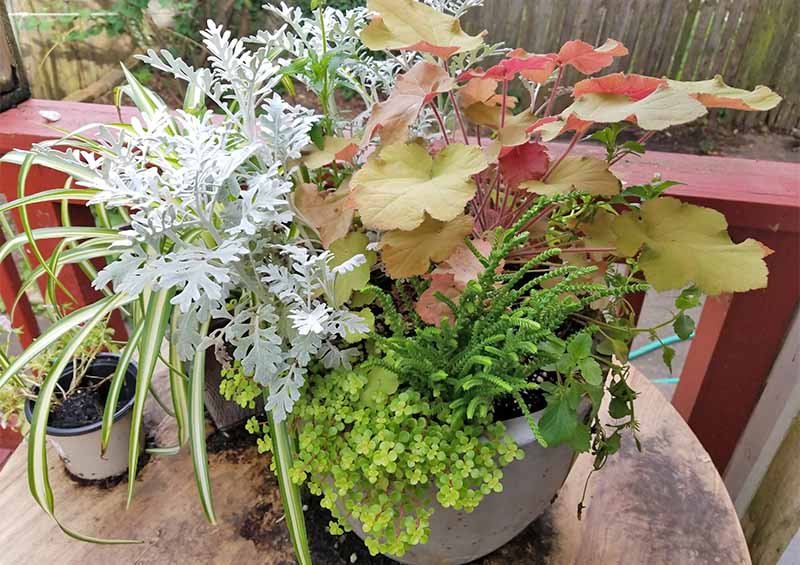
If you have limited garden space or want to move your Coral Bells around, growing them in containers is an excellent option. Here are some tips for increasing Coral Bells in pots:
- Container Size: Choose a container at least 12 inches in diameter to allow enough space for the roots to spread.
- Soil: Use a high-quality, well-draining potting mix. Avoid garden soil, which can compact in containers and prevent proper drainage.
- Drainage: Ensure your container has drainage holes to prevent waterlogging, which can lead to root rot.
- Location: Place your container in a location that receives partial sunlight or light morning sun.
Pruning and Maintenance for Coral Bells in Part Shade
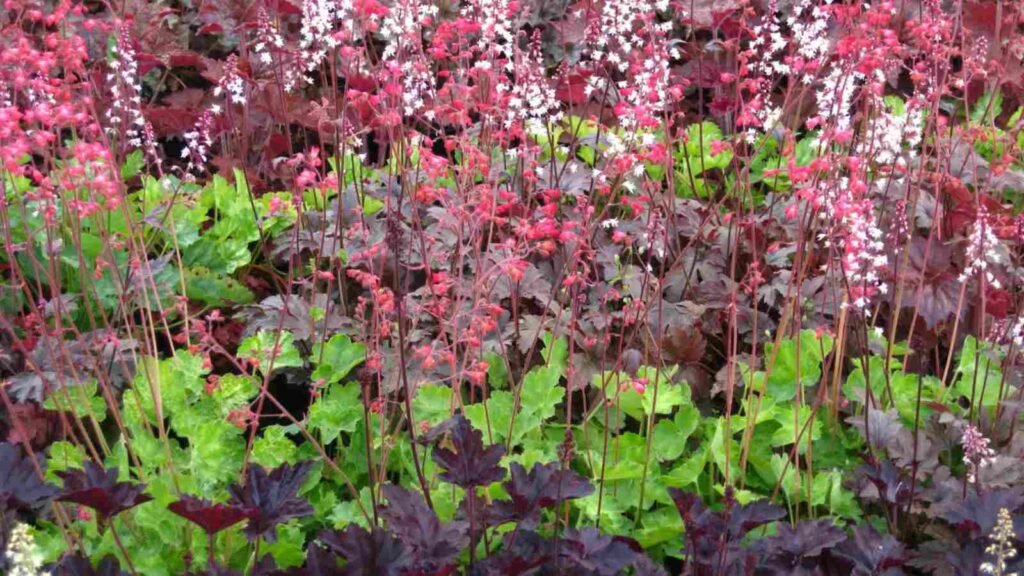
- Prune Coral Bells in early spring to prevent overcrowding and encourage healthy new growth by trimming old or damaged foliage.
- In late fall, remove yellowing or dead leaves and cut back spent flower stems to tidy up the plant.
- After blooming, trim spent flowers to promote new leaf production and maintain a fresh appearance.
- Regular pruning throughout the season helps maintain shape and prevents leggy growth.
Conclusion: Enjoy Coral Bells in Your Part Shade Garden
Coral Bells are a perfect addition to any garden, especially those with part shade. By choosing the right varieties, providing proper care, and pairing them with suitable companion plants, you can enjoy these stunning perennials throughout the growing season.
Follow these tips, and your Coral Bells will thrive, adding beauty and color to your garden for years.

